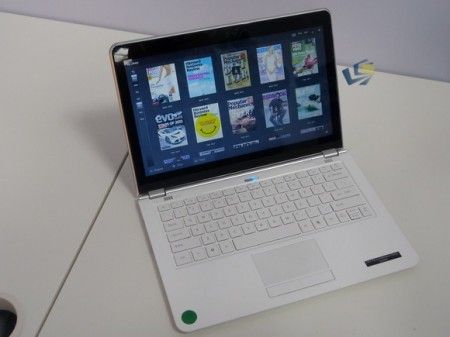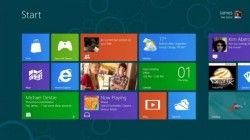Microsoft and Intel have made it no secret that they want to bring touchscreen computing to Windows and the x86 platform. The Windows 8 Release Preview will be made available in the first week of June, the same week that the annual Computex technology fair is being held in Taipei. The timing is unlikely coincidental. We’re likely to see the debut of market-ready touchscreen Ultrabooks running the Windows 8 Release Preview at Computex, a new Ultrabook from Dell could be among them.
Dell, for one, knows that touch is going to become part of the PC experience and is already hinting at launching a touchscreen Ultrabook. During a recent earnings conference call, Michael Dell talked about the company’s positioning for touch and Windows 8:
The addition of capacitive touch capability into Windows 8, we think, will be a welcome addition…and will have a full complement of products at time of launch…
This is a transition where you generally are going to need a new PC, whether it’s a tablet or an ultrabook with touch or a notebook with touch or a PC with touch or some derivative hybrid of all of the above type of products… [my emphasis]
We noted yesterday that Dell appears to be working on a business-centric Latitude Ultrabook. And while that’s exciting, I think most of us are looking forward to a refresh of Dell’s well-liked XPS 13 Ultrabook. The XPS 13 hit the Ultrabook market relatively early and is due soon for an update. Given Michael Dell’s comments, it’s quite possible that an XPS 13 refresh could include a touchscreen — we might even see it as early as Computex.
On the Microsoft Developer Network blog, Building Windows 8, Jensen Harris, Director of Program Management for the Windows 8 User Experience team talks about implementing the touchscreen experience in the PC platform:
…we do believe that touch is a useful adjunct to mouse and keyboard on the desktop. Historically, a new input method is seamlessly integrated as people learn the best use for it. Context menus, keyboard shortcuts, toolbars, and menus are all different ways of doing the same thing, yet everyone makes their own choice about what works best for them.
Touch will evolve the same way. Having used a touch-enabled laptop every day for the last year (a Lenovo x220 tablet), I have a hard time imagining not being able to touch the screen for scrolling, or to tap the OK or Cancel buttons in a dialog box. Whenever I use a non-touch laptop, it is as if I’ve forgotten how to use the PC. Of course touch is not the primary way I use this laptop, but it is a crucial piece of how I interact with it. Even on the large-screen monitor I use at work, I just instinctively touch it—I don’t think “because this screen is attached to a desktop PC, I must not be able to touch it.”
If you’ve seen capacitive touchscreens on Windows 7, you’ve probably come away disappointed. The apps simply aren’t made for it, and neither is the OS. Even Intel’s touchscreen Ultrabook reference design, which Chippy got his hands on back in March, had some visibly poor touchscreen performance — because it was running Windows 7. Have a look:
From what we’ve seen so far, Windows 8 with Metro is a huge step in the right direction for touchscreens and I’m particularly excited to see what’s in store. For one, there is native support for the smooth scrolling and edge-based gestures that we’ve come to expect from modern touchscreen devices, not to mention clear design guidelines to ensure consistency in user-experience across apps.
With Computex just around the corner, you can bet that Microsoft is pre-releasing the Windows 8 Release Preview to key partners. Those partners will have the Release Preview up and running on devices at Computex, and I’m willing to bet we’ll see a number of touchscreen Ultrabooks from some of the big names. Stay tuned — Computex starts June 5th!
Further Reading: Can Microsoft Do For Windows What Intel Has Done for the Laptop?












